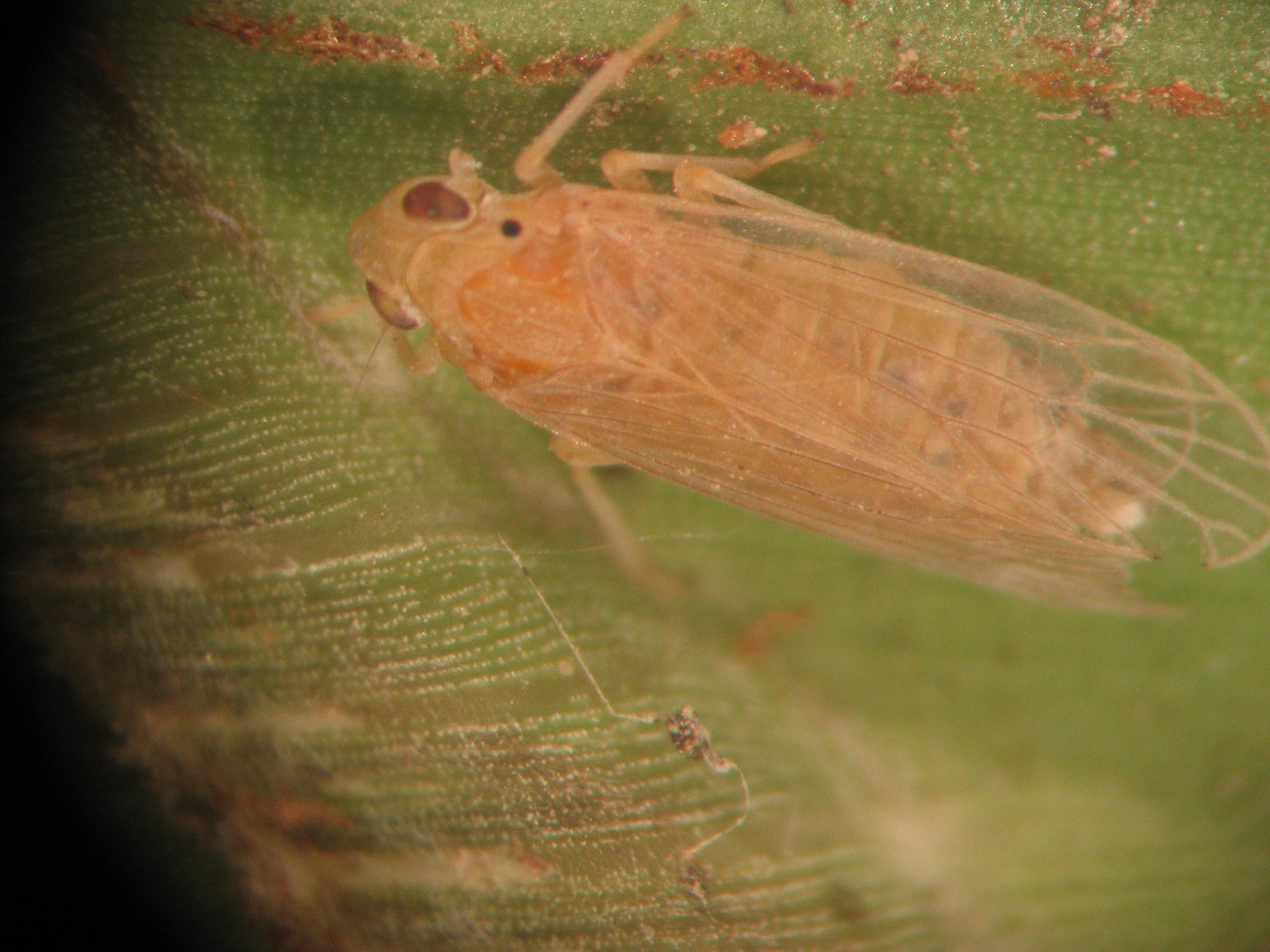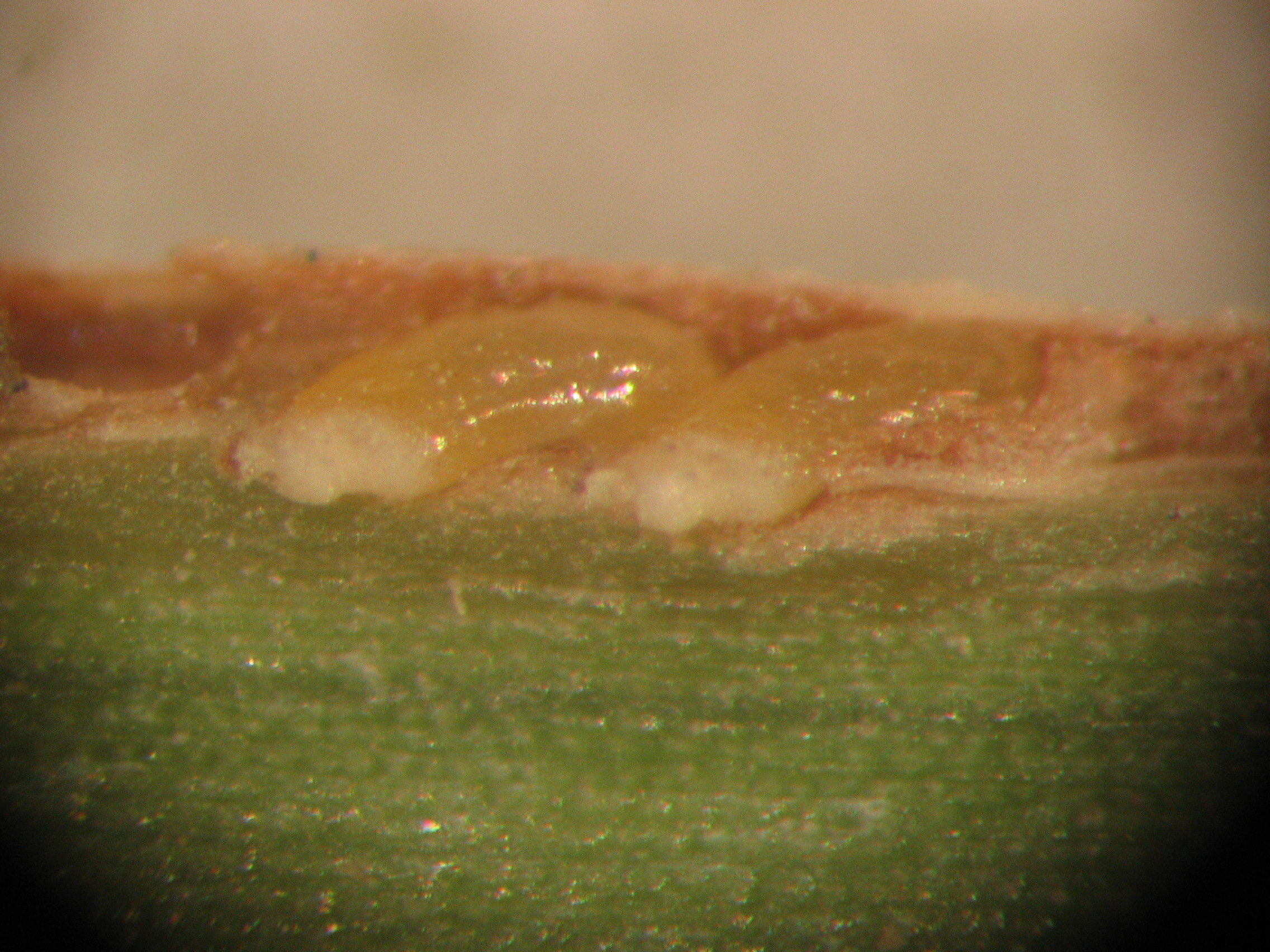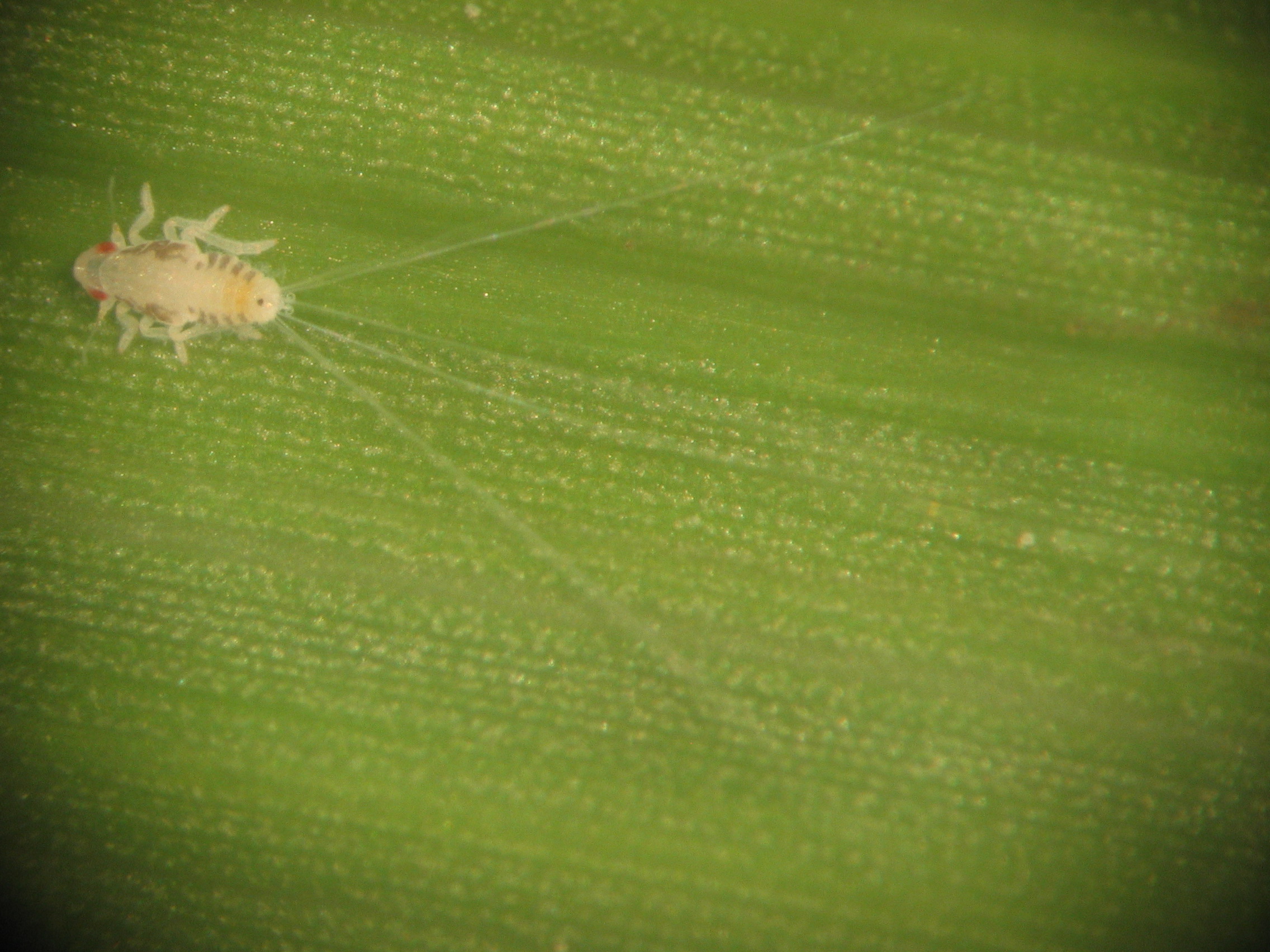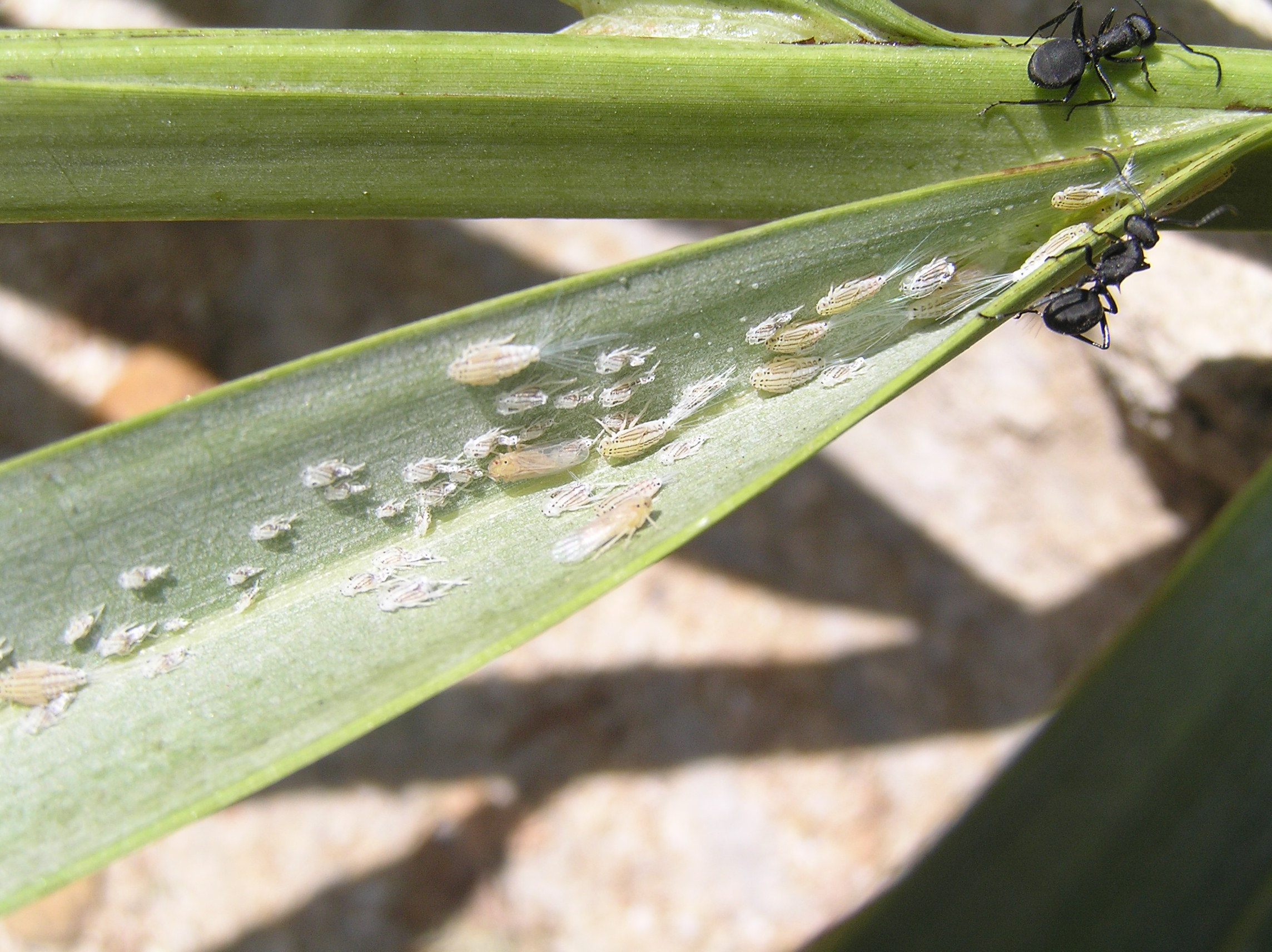Dubas Bug Project
The Dubas Bug Project is a collaborative group of scientists investigating the biological control of the Dubas bug (aka Old World date bug) by predatory arthropods in the palm date plantations of the Sultanate of Oman. Our research is a joint effort by scientists at the Ministry of Agriculture and Fisheries in Muscat, Oman and the University of Kentucky in Lexington, Kentucky USA, and is funded by The Research Council of Oman. Our goal is to use field research in Omani date palm plantations and molecular techniques in Kentucky to identify the most important predators of the Dubas bug, a common and very damaging pest of date trees. We are excited about this research and we hope you find the information you are looking for here on our webpage, either about the Dubas bug in general or about our research in particular.
About the Dubas Bug
The Dubas Bug, sometimes called the Old World date bug (scientific name Ommatissus lybicus de Bergevin), is a small, herbivorous planthopper in the family Tropiduchidae (Auchenorrhyncha: Fulgoroidea). The insect takes its name from the Arabic word for honeydew, dibis, produced by many members of this insect group. These insects are in the order Hemiptera, and like all members of this group that they use a small beak to feed, in this case on their preferred plant the date palm tree (Phoenix dactylifera L.). It is native to the areas surrounding the Persian (Arabian) Gulf and the Gulf of Oman, more recently spreading to the Caribbean Sea region as well.
This small pest can do major damage to palm dates when their populations become very large. Dubas bugs have caused severe crop losses in many nations that have substantial economic importance of dates.
Characteristics & Biology
Dubas bugs are small, tan colored insects (Fig. 1) with males and females differing in both size and appearance. Females are from 5-6 mm long, while males are in the 3-3.5 mm range. Females are yellow green and have up to ten dark spots on their head and 7th and 8th abdominal segments, while males though similarly colored have no spots on their abdomens. Males are also more tapered, and their wings are relatively longer than the wings of females.

Figure 1. Dubas bug adult.
Over their lifespans, females lay around 100 green eggs, each one elongated and 0.5-0.8 mm long. Later, eggs turn yellow-white (Fig. 2), and then bright yellow before producing bright brown nymphs (Figs. 3 & 4) with dark stripes on their dorsal surface and on their thorax and abdomen. At the tip of the abdomen are 16 long waxy white filaments (Fig. 3) that are around 3 cm in length. The red-eyed nymphs can readily walk and are capable of jumping up to 60 cm.

Figure 2. Dubas bug eggs.
 Figure 3. Dubas bug nymph.
Figure 3. Dubas bug nymph.

Figure 4. Dubas bugs feeding on a date palm leaf. The ants at the top-right are weaver ants (Polyrhachis dives Smith).
Dubas bugs complete two generations per year; one in the spring that hatches as early as February and one in the autumn that usually hatches in September. They hibernate during the winter, and in the heat of the summer they aestivate as eggs in palm fronds. Each nymph feeds immediately and must complete five instars before reaching adulthood in approximately six weeks. Adults are capable of flying and all life stages are found in the fronds and fruits of the date palm. For a summary of the Dubas bug life cycle in Oman, see Al-Kindi et al. (2017).
Economic Importance
The Dubas bug plague on date palms is two-fold; they not only cause direct harm on palm stalks by sucking the sap of dates but the honeydew they excrete falls on the fronds capturing dust and promoting fungal growth that blocks light and prevents the plant from getting enough sunlight. Dead areas also occur on the fronds where eggs are laid. Eventually, affected fronds become light to yellow green. A heavy infestation can cause up to 50% crop loss. Dubas bugs are typically a significant pest for only one or two consecutive seasons at a time. In Oman where at least 40 varieties are grown, date palm production is second only to oil production in economic importance (Al-Rawahi et al. 2018).
Control
Dubas bugs can be controlled by both chemical and biological means. Insecticides can be applied from the ground, but this is often difficult because of the height of palm trees and so often they are applied from the air. Oman has relied heavily on insecticides (Al-Rawahi et al 2018), with organophosphates most widely-used (Al Antary 1996). However, insecticides have the unfortunate side effect of also killing many natural enemies of Dubas bugs and so aside from their cost this may not be a desirable method especially at lower than outbreak population levels.
Dubas bugs have natural enemies that include parasitoids, small wasps that lay their eggs on or inside of the pest insect eventually killing them, and predators that eat them. Dubas bug populations also seem to occur in lower numbers when date trees are well-spaced, presumably because of the increased exposure to dessicating wind and sunlight as well as increasing their vulnerability to natural enemies. The focus of this project is to discover what predators living in date palms are feeding on Dubas bugs and if the predation frequency is positively correlated with changes in dubas bug population density. This information will be valuable towards an integrated pest management program aimed at preventing the Dubas bug from reaching densities where they significantly impact date yield and overall tree health.
Project Update!
As of June, 2019, ~7,000 potential Dubas bug predators have been collected directly from date palm fronds during the fall of 2016 and spring of 2017 and have been tested for predation on the Dubas bug. To do this, we designed PCR primers specific to the Dubas bug, extracted DNA from all of the potential predators and performed diagnostic PCR on all of them. We also sequenced the cytochrome c oxidase subunit I (COI) gene for over 600 predator specimens that tested positive for Dubas bug predation for identification purposes. The COI gene is currently being used for species identification via the Barcode of Life Database (BOLD; Hebert et al. 2003) – COI sequences submitted to their website compares the query sequence to over 7 million barcodes in their database (as of June, 2019). If the BOLD database contains the species matching the query sequence, a species-level identification can usually be made. If not, it is often possible to assign a genus or family-level identification in conjunction with examining the pictures of every specimen we collected. We found that at least 56 arthropod species prey on Dubas bugs in date palm plantations in Oman. We are preparing a manuscript detailing the results of our study for publication which will be submitted later this summer. We also produced a fully illustrated key to the predators we identified as preying on the Dubas bug which is linked below.
Source Materials
Al Antary TM. 1996. Pesticides and Toxicity. Publications of University of Al Quds Al Maftouh, Amman. 443 pp.
Aldryhim Y. 2005. Dubas Bug (Old World Date Bug), Ommatissus lybicus Bergerin (Tropiduchidae: Hemiptera). Pp. 1254–1256 in JL Capinera, Ed. Encylcopedia of Entomology, 2nd Edition.
Al-Kindi KM, Kwan P, Andrew N, Welch M. 2017. Impact of environmental variables on Dubas bug infestation rate: A case study from the Sultanate of Oman. PLoS ONE 12(5): e0178109.
Al-Rawahi FG, Al-Antary TM, Sadder MT. 2018. Effect of three chemicals and neem insecticide against autumn populations of dubas bug, Ommatissus lybicus de bergevin (Tropiduchidue: Homoptera) in Oman. Fresenius Environmental Bulletin 27(12): 8594–8599.
Hebert PDN, Cywinska A, Ball SL, DeWaard R. 2003. Biological identifications through DNA barcodes. The Royal Society 270: 313–321.
Talhouk AS. 1991. On the management of the date palm and its arthropod enemies in the Arabian Peninsula. Journal of Applied Entomology 111: 514–520
Wilson MR. 1986. Proceedings of the 2nd International Workshop on Leafhoppers and Planthoppers of Economic Importance 327–342.
Links
Oman Ministry of Agriculture and Fisheries
